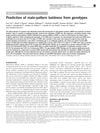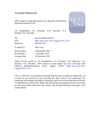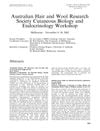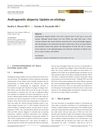Androgenetic Alopecia: Identification of Four Genetic Risk Loci and Evidence for the Contribution of WNT Signaling to Its Etiology
January 2013
in “
Faculty of Health; Institute of Health and Biomedical Innovation
”

TLDR Four genetic risk areas related to male-pattern baldness were identified, with WNT signaling playing a role in its development.
In 2013, a study was conducted to identify unknown risk loci for androgenetic alopecia (AGA), also known as male-pattern baldness. The study replicated single-nucleotide polymorphisms (SNPs) at 12 genomic loci that showed suggestive association with AGA in a previous meta-analysis. The replication set comprised 2,759 cases and 2,661 controls of European descent. The combined analysis of the replication and the meta-analysis data identified four genome-wide significant risk loci for AGA on chromosomes 2q35, 3q25.1, 5q33.3, and 12p12.1. The strongest association signal was obtained for rs7349332 on chr2q35, located intronically in WNT10A. Expression studies in human hair follicle tissue suggested that WNT10A has a functional role in AGA etiology, providing genetic evidence supporting an involvement of WNT signaling in AGA development.





